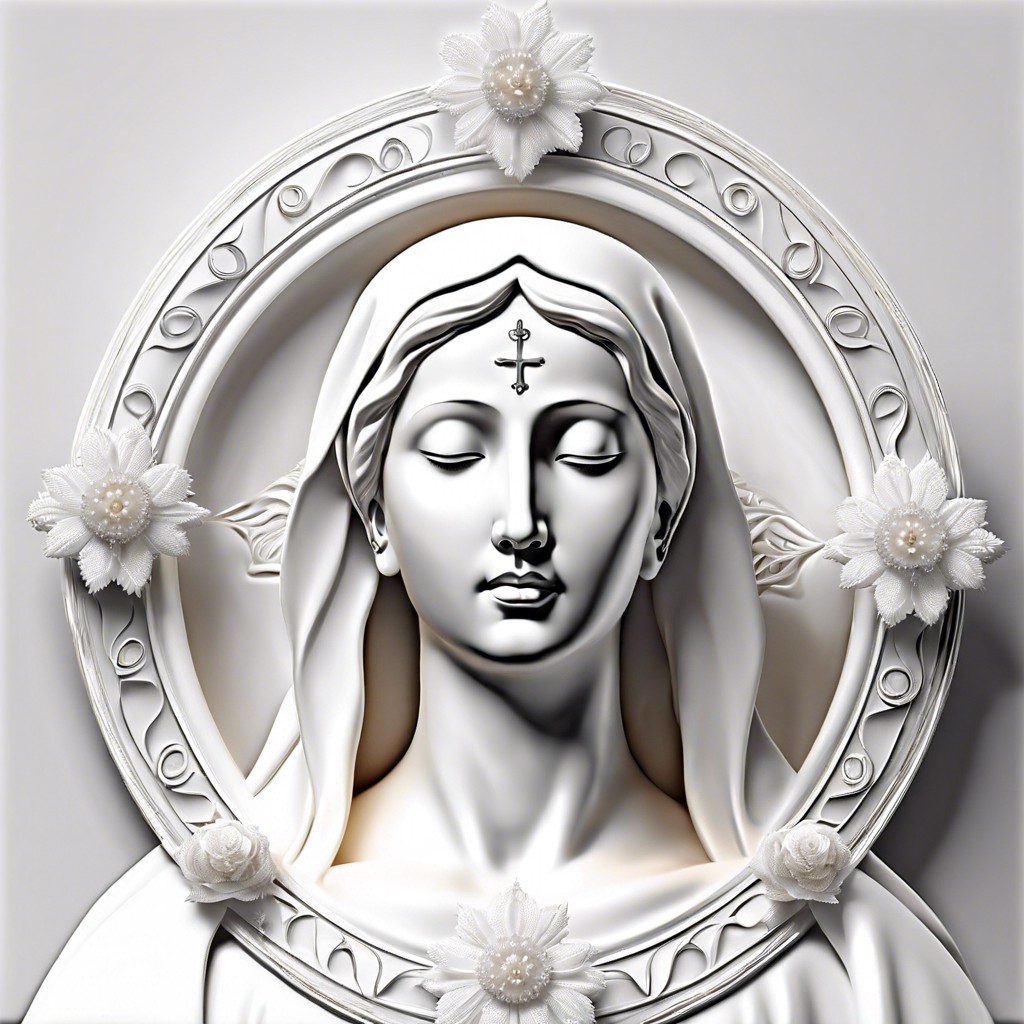Discover the spiritual meanings and symbolism of colors in the Bible, offering insightful interpretations and divine significance.
Colors in the Bible carry profound spiritual meanings, each hue shimmering with divine symbolism. This guide will unwrap the sacred layers behind white, red, blue, purple, and green, illuminating their impact on biblical narratives and spiritual lessons. Dive in and discover how these colors convey purity, atonement, revelation, royalty, and renewal, enriching your understanding of scripture.
Key takeaways:
- White symbolizes purity and holiness.
- Red signifies blood and atonement.
- Blue represents divine revelation and grace.
- Purple symbolizes royalty and priesthood.
- Green symbolizes life, growth, and renewal.
Symbolism of White: Purity and Holiness

In biblical symbolism, white stands out as a representation of purity and holiness. It often signifies divine presence and sets a standard of spiritual cleanliness. Key instances where white is used bolster this interpretation.
White garments frequently appear in biblical texts. Angels and figures in visions, such as those in Revelation, are often described as wearing white robes, emphasizing their sanctity. Additionally, during the Transfiguration, Jesus’ clothing is illuminated in a dazzling white, underscoring His divine nature.
The term “white as snow” is another powerful image, illustrating moral purity. Isaiah 1:18 captures this vividly, suggesting that sins, though scarlet, will be made white as snow when forgiven. This metaphor highlights transformation and redemption.
Overall, white in the Bible encapsulates a divine standard and offers a clear imagery of holiness and purification.
The Spiritual Significance of Red: Blood and Atonement
Red in the Bible often symbolizes significant spiritual concepts, primarily tied to blood and atonement.
Blood, shed in sacrifices, represents the price of redemption. It underscores the idea that life is valuable and that sacrifices are necessary for atonement of sins.
In the Old Testament, the Passover lamb’s blood marked the Israelites’ homes, signifying protection and deliverance. This prefigures Christ’s ultimate sacrifice in the New Testament, where His blood symbolizes the redemption and cleansing of humanity’s sins.
Red also signifies God’s love and sacrifice, the passion and commitment involved in the act of atonement. It highlights the depth of divine love, willing to undergo suffering for humanity’s salvation.
Blue in Biblical Context: Divine Revelation and Heavenly Grace
Blue, often associated with the sky and the sea, profoundly symbolizes divine revelation and heavenly grace in the Bible. This color frequently appears in sacred texts, denoting a connection to the divine.
In Exodus, the high priest’s garments include blue, signifying their role as intermediaries between God and humanity. The use of blue in these garments underscores a direct link to divine authority and presence.
The Book of Numbers describes the Israelites using blue threads in their tassels to remind them of God’s commandments. This serves as a physical reminder of their spiritual obligations and divine guidance.
Blue also represents the heavenly realm. Revelation describes a vision of the throne of God with a sea of glass, clear as crystal, echoing the purity and vastness of divine grace.
In these ways, blue transcends mere decoration. It holds deep spiritual significance, inviting believers into a deeper recognition of divine revelation and heavenly grace.
The Meaning of Purple: Royalty and Priesthood
Purple is a significant color in the Bible, often symbolizing royalty and priesthood. This is because purple dye was rare and expensive in ancient times, making it a color reserved for the elite.
It appears in the description of the tabernacle and the garments of high priests, signifying their revered status. Kings wore purple robes, linking the color directly to authority and nobility.
In the New Testament, Jesus is mockingly dressed in a purple robe before His crucifixion, highlighting the irony and prophecy of His true kingship.
Purple also represents the blending of red and blue, combining earthly struggles with divine intervention, encapsulating the dual nature of Christ as both King and Priest.
Symbolic Use of Green: Life, Growth, and Renewal
In the Bible, green often symbolizes life and growth, reflecting the nurturing aspects of faith. It’s the color of flourishing plants and new beginnings, linking it to renewal and regeneration.
God’s creation is filled with green pastures and fields that signify His provision and care. Psalm 23, for instance, speaks of green pastures representing rest and sustenance.
Moreover, green embodies spiritual growth. Just as a plant needs water and sunlight, believers need faith and God’s guidance to grow. It stands for prosperity in a spiritual sense, indicating the flourishing of one’s soul.
Green is also connected to eternal life. This color hints at the everlasting nature of God’s promise to His followers, symbolizing hope and an unending connection with the Divine.





